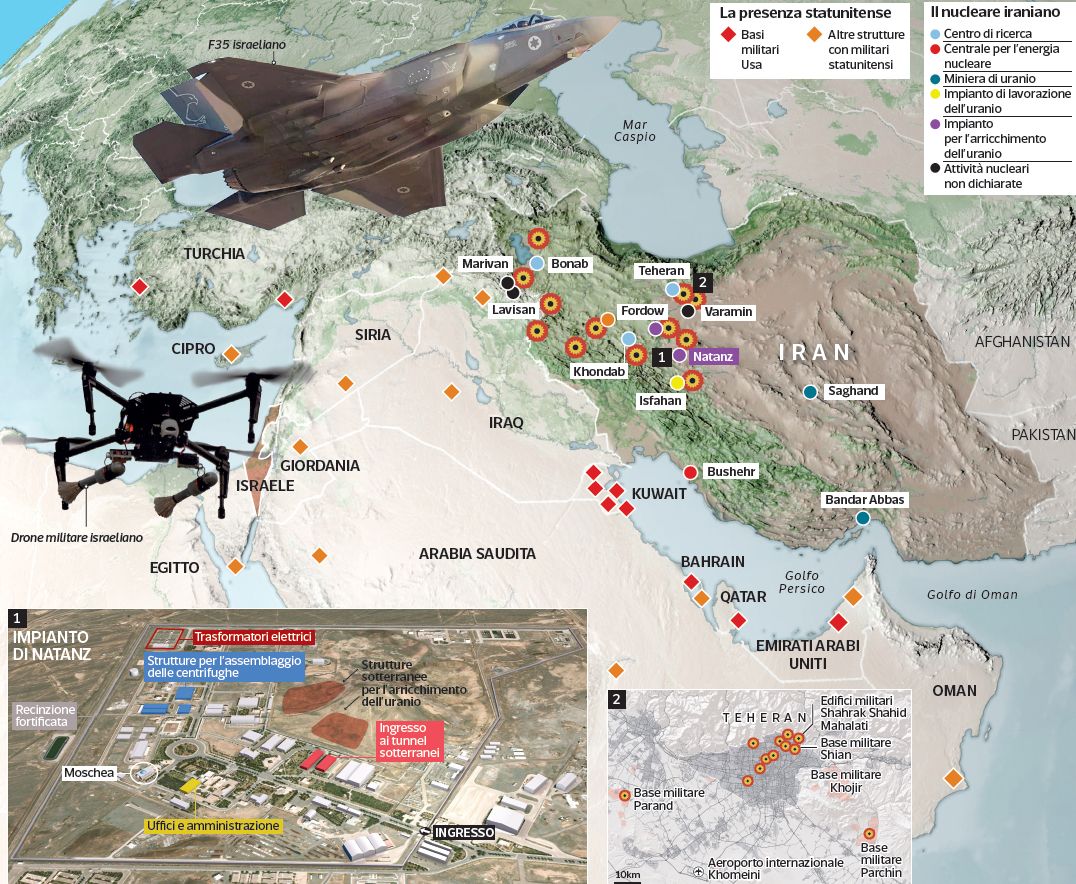What did Israel get from the attack? Is it the end of the atomic plan of Iran?

Tehran would have had the potential to build nine nuclear newspapers: « We have all the pieces of the puzzle ». After the « radiological contamination » raids in the affected plants
In the night between 12 and 13 June, Israel launched a massive attack against the sites related to the Iranian nuclear program.
1. Where and how effective the attack was?
The main action concerned the Natanz website, consisting of three underground buildings and located about 220 kilometers south-east of the capital. According to Tehran, he suffered « on the surface » damage while Israeli sources claim to have affected even in the subsoil, where many equipment are hosted. Other raids concerned plants in Tabriz, Arak, Fordow and perhaps in the capital. Some news reported a series of explosions near the site. The spokesman for the Israeli army (IDF), Effie Defin, also confirmed the attack on the Rooring Center of the Uranium of Isfahan, in the central Iran. No less than seven scientists killed, fundamental figures to carry on the research. However, it takes time to evaluate the global impact, the offensive is only at the beginning and the Jewish state has already announced that it will go on for days.
2. What were the other targets of the IDF?
At least six bases, missiles and radar stations, launchers, infrastructures, anti -aircraft equipment. Struck residences hosted in two complexes managed by the military and some buildings where researchers or officers lived. There would be about twenty high degrees eliminated by the Strikes: in fact the control summit of the Pasdaran and the most strategic apparatuses. An attempt to disarticulate leadership and make retaliation more difficult against the Jewish state.
3. How close were the Iranians to the atomic bomb?
The report published last week by the International Agency for Atomic Energy reports the « general lack of cooperation » of the Islamic Republic and reiterates that the Ayatollah country has enough uranium enriched at 60% purity in order to be able to create nine atomic bombs.
Raphael Grossi, general manager of the agency, said in an interview with Courier: «There is a difference between the material and the bomb. From the point of view of the material they are far ahead: they already have it. In these years they have struck it enough. But to have an atomic weapon there are other technologies to consider: not impossible for the Iranians. They themselves said: « We have all the components of the puzzle » ». For the first time in twenty years, Aiea formally accused the Islamic Republic of violating commitments on nuclear power.
4. What was the AIEA alarm? Is there now the risk of radiation?
The AIEA report last week was certainly an assist to proceed in the attack plan against Iran that has been designing for at least eight months. Just two days ago, for the first time in twenty years, Aiea formally accused the Islamic Republic of violating the commitments on nuclear power.
Retained in Vienna, the Board of Directors of the World Nuclear Control Body has approved a resolution that denounces Tehran’s « numerous defaults » in providing complete responses on its nuclear activities. Out of 35 member countries, 19 voted in favor, with the support of the United States, the United Kingdom, France and Germany. The report reads a key phrase that strengthens the beliefs of the Israeli government, which has always been certain that the only way to stop the Ayatollah is the war: « Aiea declares that it cannot guarantee that the Iranian nuclear program is exclusively peaceful ».
Last night, after the RAIDs of the IDF, the director Aiea Grossi said that « the level of radioactive activity after the attack remained unchanged, indicating the absence of external radiological impact on the population or on the environment », but has produced a « radiological and chemical contamination inside the plants ».






